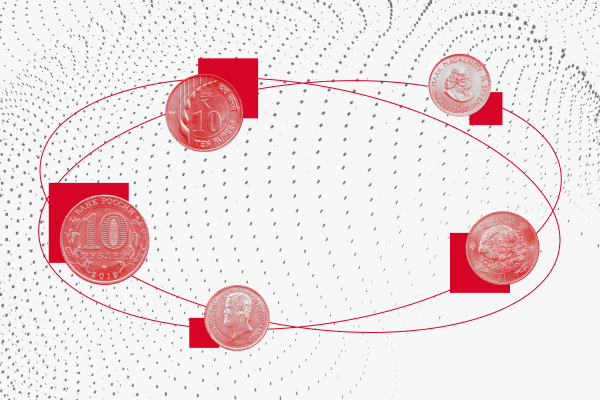Trading Signals 05/02 – 09/02
Is a BRICS Currency on the Horizon?
Global banking concerns have investors seeking alternatives to the US dollar

The developing world and non-Western powers have long sought alternatives to the current banking and trade system dominated by financial institutions in the US and Europe. The recent seizure of billions of dollars in Russian currency reserves without a legal precedent has once again raised an alarm for a safer and less-politicized system in international finance.
A BRICS currency may indeed be an excellent solution for the non-Western nations, but will we see it materialize to help counter US and EU dominance in the financial world?
The short answer is “no”, at least not in the near future. However, the groundwork for such a move is being laid and international financial solutions are being considered that would best benefit the BRICS countries and emerging economies of the world. There are also some asset groups that are attractive despite a unilateral BRICS currency.
What is BRICS? A quick search of the web will get you detailed info if you’re unfamiliar, but the acronym stands for Brazil, Russia, India, China, and South Africa. The term predates the organization, and the first meetings of the original four (BRIC) were in 2006 with the inaugural summit in 2009. In 2010, South Africa was added to the group.
The goal of the organization has been to find a stable reserve currency to insulate the world from fluctuations in US/Western monetary policy and to facilitate the development of member countries as well as others. To achieve these goals, BRICS has created the New Development Bank (NDB), formerly BRICS Development Bank, which helps finance infrastructure projects and develop additional initiatives to generate economic growth very similar to the IMF and World Bank.
As of 2021, BRICS countries host over 40% of the global population, account for nearly 25% of world GDP, and 16% of global trade. All of these indicators continue to grow.
There is little doubt in the capabilities of the BRICS countries to facilitate a new currency, but these things take time. The old saying goes that ‘the Devil is in the details,’ and there are several hurdles to be overcome beforehand. These issues include a replacement for the SWIFT banking system, a territorial dispute between China and India, and the current conflict in Ukraine that appears to be escalating and polarizing the world.
Additionally, the BRICS countries are spread out and don’t have the historic financial ties that the West enjoys. Even with shared borders and centuries of established relationships, the EU took decades to develop into an economic bloc with its own currency.
Will we see a BRICS currency in the future? Probably or at least something similar in concept. In the meantime, bilateral trade agreements in local currencies are on the rise with countries formalizing agreements to settle trade balances without the US dollar. The signatories to these agreements aren’t just within BRICS nations either, with recent examples of Saudi Arabia, UAE, Bolivia, and Argentina among the dozens of countries willing or seeking to avoid the US dollar.
BRICS cooperation will continue to improve and the aforementioned hurdles will be surpassed. Other nations will join the bloc and this will generate momentum, which will, in turn, increase the purchasing power of emerging economies in Asia and the Global South. It just won’t happen quickly.
For investors and traders, both long and short term, there are still some excellent opportunities by exploring currency pairs that include BRICS nations. Additionally, precious metals, commodities, and some cryptocurrencies will see increasing value. Informed financial managers have already begun hedging against the dollar and reducing exposure to recessions in the West. It may be wise to follow their lead.
Oil: A Review of Early 2024
China’s Economy: Early 2024
Simple Strategy for Beginner Traders

